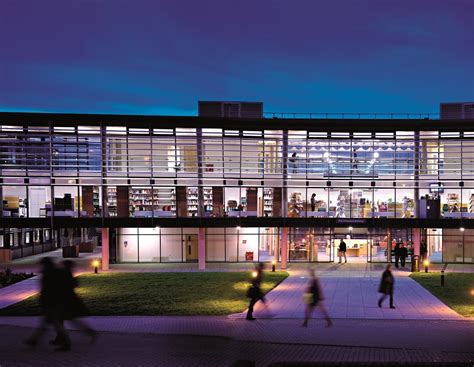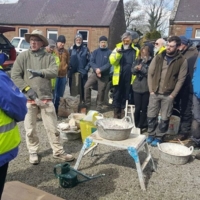This website uses cookies so that we can provide you with the best user experience possible. Cookie information is stored in your browser and performs functions such as recognising you when you return to our website and helping our team to understand which sections of the website you find most interesting and useful.
Review of Stirling 2019 Conference & Gathering

The 2019 Gathering of the Building Limes Forum was held in Stirling, with 190 delegates from many backgrounds and countries sharing their knowledge, ideas and perspectives of all things lime. The Gathering was generously supported by Historic Environment Scotland, who provided The Engine Shed for plenary sessions, use of the Great Hall of Stirling Castle for the Baker Memorial Lecture and gala dinner, and, not least, a generous grant towards bursaries and travel grants for young craftspeople and professionals from around Scotland.
Throughout the weekend we were treated to contractors sharing their technical knowledge, backed up by scientists. Niamh Elliott found it a most informative conference with directly applicable knowledge for Scottish traditional buildings and their functional performance. The presenters that particularly stood out for Niamh were:
- Mark Thacker. The fact that you can manufacture lime anywhere.
- Tim Meek. Masonry was always covered, lime finishes externally were absolutely universal, the integrated relationship between bedding mortar, the internal finish and the external finish. Harl is not a whisper on the surface, “harl as you go” is the best combination of circumstances for carbonation to take place.
- David Wiggins. The functional performance of capillary active harling is vital for masonry and keeps buildings dry. Whilst the vapour permeability of air lime is 50% greater than NHL, the capillary activity is several times greater (several hundred percent) and it is capillary activity that dries wet walls out. Breathability is the key and mortars must be lime rich. Hot mixing inspires experiment: we can achieve the right palette by the right lime proportion and we need porous ingredients. We can achieve the same NHL outcome with hot mix, pozzolans (recycled industrial materials) and better performance, we need to go back to hot mixes and add to them adopting them for future climate challenges, change detailing to limit water load on the masonry. Lime went wrong when craftspeople no longer designed their own mortars which were air limes with simple additions. It’s not lime that’s failing; it’s specification.
- Roger Curtis. Hot mix is the go-to except where circumstances determine otherwise. Traditional buildings are under increased loading perpetuated by loss of understanding in detailing. We must match what was used: like-for-like repair, technical suitability, craft skill and empowerment gives a more resilient building, there must be trades, trust and dialogue.
- Richard Fraser. Adding pigment to limewash during slaking so it benefits from the heat, leaving it to mature for a few weeks, then sieving it. Steam clean 150°C low pressure high heat to remove all organic growth taking surface back to good limewash and using a mortar grout gun with lime putty for consolidation.
- Duncan Strachan. The challenges of servicing a remote site in an extreme climate, access, delivery and work crew.
- Jessica Hunnisett. The competence of those who are doing the work, sensible specification, allowing for a period of convalescence for a building to recover and heal, the problems of minimal maintenance culture, lack of skills and confusion on what to specify. The challenges of high exposed wall heads, vegetation growth lime leaching, rough racking and exposed wall cores.
- Nigel Copsey. Proportion and method: the importance of the hot mix slake: cover with sand every layering so that the steam may be kept in, beat the mortar, incorporate the lime and sand well together, apply the mortar immediately whilst it is still hot.
- Andy Bradley provided the quote of the conference with his take-down of ‘just add water’ pre-mixed mortars which risked dumbing down the craft. “You don’t remove half the notes from a Beethoven sonata so that I can play it, especially when I can’t play the piano”.
- Tim Meek gave the Baker Memorial Lecture warning of the danger of being distracted by the romantic twaddle of rubble-mania instead of concentrating on lime facts. The talk celebrated the essentials of vernacular construction, with particular focus upon the importance of lime-harled and limewash finishes to the holistic success of traditional building technology.
Lecture sessions ended with Question Lime: delegates submitted questions which were put to an expert panel of lime producers, specifiers and practitioners. Lively and thought-provoking discussion was the result.
After the morning sessions of quick-fire lectures, attendees were bussed to a variety of historic sites: Charlestown and its lime kilns, to Doune Castle, where scaffolding allowed access to see a succession of repair strategies from the Victorian to the present day, to Bannockburn House, in the process of being rescued by a local trust, and to Kinneil House, rescued from complete demolition by the chance discovery of exceptional 16th and 17th century wall-paintings. There were also several opportunities to visit Stirling Castle, the Great Hall of which shone resplendent throughout the weekend, rain, shine and mist, in its richly coloured Kings’ Gold limewash, a beacon of light and capillary-active lime finish shining down upon the town.
Become a member
Members of the Building Limes Forum form a community of lime enthusiasts and practitioners, most of whom are producers, suppliers, specifiers or users of lime.
Useful documents
Contact Building Limes Forum
Building Limes Forum
Riddle’s Court
322 Lawnmarket
Edinburgh, EH1 2PG, UK


